Kokopelli Legends & Lore
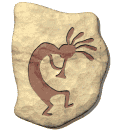
Kokopelli is a
Hopi word
meaning (roughly) wooden-backed;
most of the familiar depictions of
Kokopelli are copied from Hopi art,
which in turn is derived from ancient Anasazi glyphs.
Ko-ko-pel-li
n. {der. Hopi "kokopilau" (koko = wood, pilau = hump)}
the humpbacked Flute Player, mythical Hopi symbol of
fertility,
replenishment, music, dance, and mischief.
Who Was Kokopelli?
Known as a fertility god, prankster, healer and story teller, Kokopelli has been a source of wonder throughout the country for centuries. Kokopelli embodies the true American Southwest, and dates back over 3,000 years ago, when the first petroglyphs were carved. Although his true origins are unknown, this traveling, flute-playing Casanova is a sacred figure to many Southwestern Native Americans. Carvings of this hunch-backed flute-playing figure have been found painted and carved into rock walls and boulders throughout the Southwest.
There are many myths of the famous Kokopelli.
One of which is that he traveled from village to village
bringing the changing of winter to spring; melting the snow
and bringing about rain for a successful harvest. It is also
said that the hunch on his back depicted the sacks of seeds
and songs he carried. Legend also has it that the flute
playing also symbolized the transition of winter to spring.
Kokopelli’s flute is said to be heard in the spring’s
breeze, while bringing warmth. It is also said that he was
the source of human conception. Legend has it, everyone in
the village would sing and dance throughout the night when
they heard Kokopelli play his flute. The next morning, every
maiden in the village would be with child.
Whatever the true meaning of Kokopelli is, he has been a
source of music making and dancing, and spreading joy to
those around him. Even today, Kokopelli, with his hunchback
and flute, is always welcome in our homes.
The legend of Kokopelli (pronounced "Coke-a-pellie") is well-preserved in ancient rock carvings and paintings dating back as far as 3,000 years. His legend however, is no less popular today - having survived more than one hundred generations. Below, is a compilation of stories collected through many hours of research. Certainly, you can find more stories (and images in Art) on the World wide web.
Kokopelli, distinguished by his hunch-back, dancing pose, and flute, is the only anthropomorphic petroglyph to have a name, an identity, and an established gender. His name may have been derived from the Zuni name for god ("Koko") and the Indian name for the Desert Robber Fly ("pelli"). His association with the Desert Robber Fly may stem from the fact that this insect too, has a hump on his back and a prominent proboscis. But, Kokopelli is known by other names, as well. To the Hopi, he is known as "Kokopilau" - meaning "wood hump". To others, he is known as Kokopele, Kokopetiyot, and Olowlowishkya. He also bears a nickname - "Casanova of the Cliff Dwellers", a tribute to his image and legend. Kokopelli's lesser known female counterpart is known as "Kokopelli Mana".
Kokopelli is a prehistoric deity depicted frequently in ancient rock art, estimated to be over a thousand years old.
Found throughout the mountains, deserts, and
high plains of the southwestern United States. Frequently
shown as a hump-backed flute player, this mythic being has
survived in recognizable form from Anasazi times to the
present. Kokopelli can also be found in various other places
throughout the world such as SF
hotels and hotels
in
Chicago Illinois as artwork or on different
items.
There is an appealing and timeless quality about Kokopelli
which fascinates everyone, even in our modern technological
age.
Other Names
Kokopele
Kokopelli-mana or Kokopelmana
(actually, Kokopelli's wife - Hohokam)
Kokopeltiyo
Kokopilau
Neopkwai'i (Pueblo)
Ololowishkya (Zuni)
Sacred
Path
Cards
The Discovery of Self through Native Teachings
By Jamie Sams
"If Kokopelli has lured you with his magical
flute, it is time to listen to his song.
This song is one of fertility. You are being asked to use
your talents to
create fertility in some area of your life. If things have
been slow moving,
Kokopelli's song is saying that whatever you intend to plant
at this time will
be very productive for you.
Planting seeds for the future takes effort on your part, so
now is the
time to use your skill and resources to make use of the
magic.
If you have a project to begin or an idea to develop, the
timing couldn't be better.
Shift away from any old, limiting ideas and move forward.
The time is now - the power is you !"
The Ballad of Kokopelli?
A
strange lonely figure stares out of the past
where engraved by an artist in stone
Held firm by the sand in which he is cast,
these last thousand years quite alone.
Could he be listening, trying to hear
moccasins scuffing the butte?
Bringing the people once again near
to hear Kokopelli's sweet flute?
His
image inscribed on a thousand rock faces
from east to the great western sea;
From Sonora's hot sun to the north glaciers bases,
proclaiming this loved tutelary.
Though powers possessed and methods employed
are often in open dispute;
One thing is agreed, the people did love
to hear Kokopelli's sweet flute.
This
stick
figure man, with a hump on his back
seemed always to cast a good feeling;
His magic perhaps, taken out of his pack
would comfort the sick and do healing.
Whatever his talents, they surely were grand,
a fact no one cares to refute,
As people would come from afar in the land,
to hear Kokopelli's sweet flute.

Kokopelli
play
for me,
So my heart may sing,
Magic flute of mystery,
Fruitful dreams you bring.
Song of Aztlan,
Fertile Fire,
Canyons of my mind,
Sacred union,
Heart to heart,
Speaks of the Divine.
Kokopelli
I
am Kokopelli,
All are Kokopelli.
There is nothing that is not Kokopelli.
I as Kokopelli am myself, in search of Kokopelli.
When Kokopelli meets Kokopelli,
Kokopelli is pleased.
All who know the mystery of Kokopelli's play,
Sense the future that is on it's way.
Listen for the simple beauty of the flute,
It hearkens the truth and enlightens the route.
Go Kokopelli!
Kokopelli.

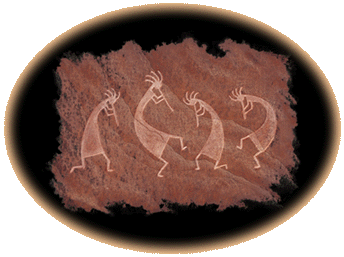
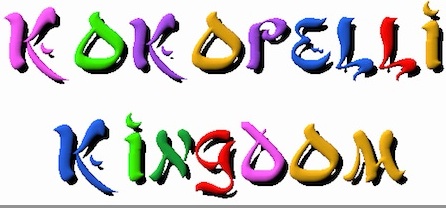








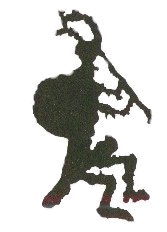
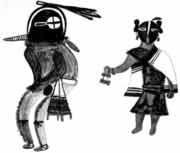
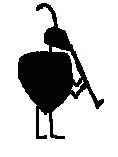
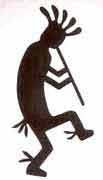
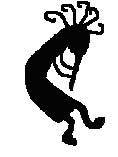

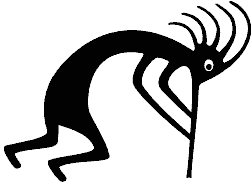
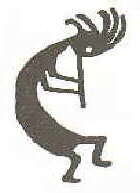
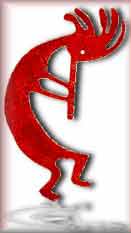
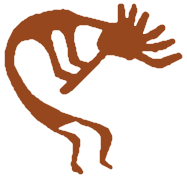

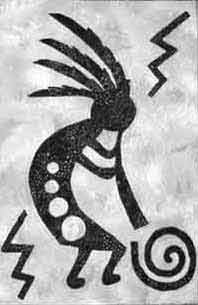
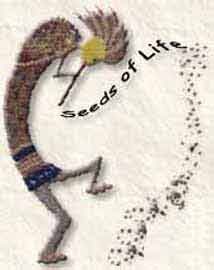
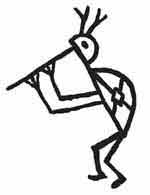

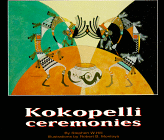
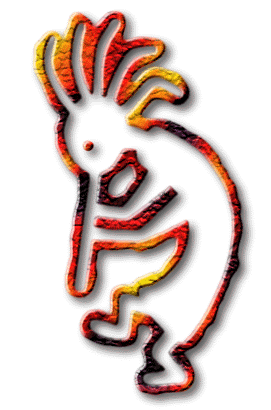
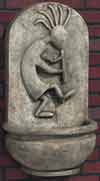


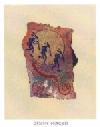



 Return to Indigenous Peoples' Literature
Return to Indigenous Peoples' Literature